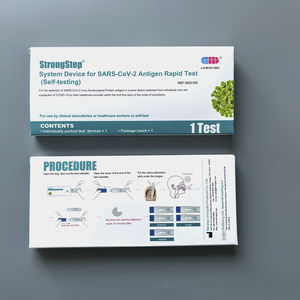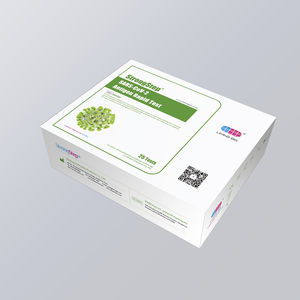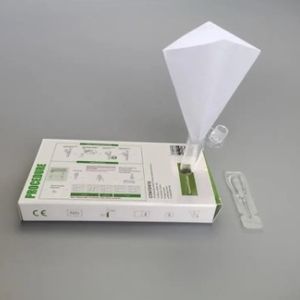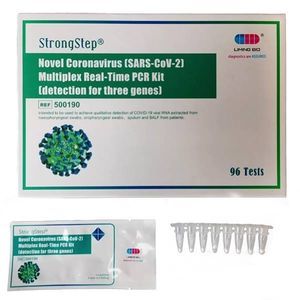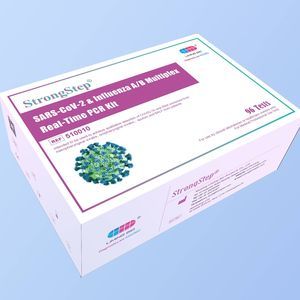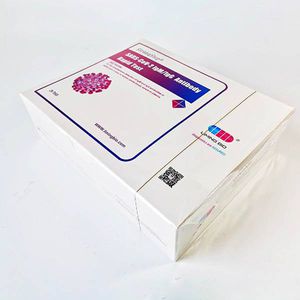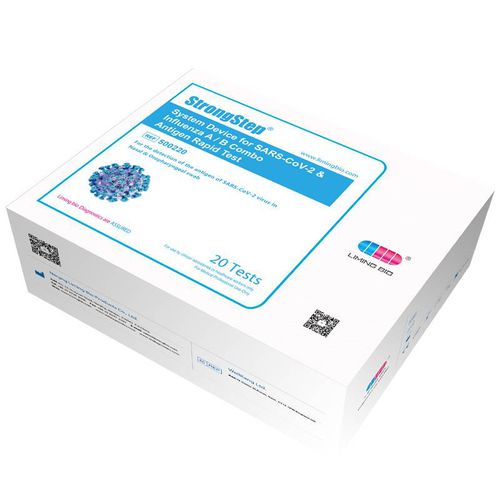
- Laboratory
- Laboratory medicine
- COVID-19 rapid test
- Nanjing Liming Bio-products Co., Ltd.

- Company
- Products
- Catalogs
- News & Trends
- Exhibitions
COVID-19 rapid test 500220for antigenscoronavirusinfluenza A
Add to favorites
Compare this product
Characteristics
- Applications
- COVID-19
- Tested parameter
- for antigens
- Micro-organism
- coronavirus, influenza A, influenza B
- Sample type
- nasal, throat
- Result display time
15 min
Description
The novel coronaviruses belong to the β genus. COVID-19 is an acute respiratory infectious disease. People are generally susceptible. Currently, the patients infected by the novel coronavirus are the main source of infection; asymptomatic infected people can also be an infectious source. Based on the current epidemiological investigation, the incubation period is 1 to 14 days, mostly 3 to 7 days. The main manifestations include fever, fatigue and dry cough. Nasal congestion, runny nose, sore throat, myalgia and diarrhea are found in a few cases.
Influenza is a highly contagious, acute, viral infection of the respiratory tract. The causative agents of the disease are immunologically diverse, single-strand RNA viruses known as influenza viruses. There are three types of influenza viruses: A, B, and C. Type A viruses are the most prevalent and are associated with most serious epidemics. Type B viruses produce a disease that is generally milder than that caused by type A. Type C viruses have never been associated with a large epidemic of human disease. Both type A and B viruses can circulate simultaneously, but usually one type is dominant during a given season.
Advantages of System device
Double biosafety protection design to protect operator and Lab
Three types of severe respiratory viruses were detected simultaneously
Independent Packaging
Can be used for home self-testing
Clinical significance
1. The antigen test is positive and has the diagnostic value. It can be confirmed again by PCR.
2. If the antigen is négative, the possibility of virus infection cannot be completely ruled out.
Catalogs
COVID-19 leaflets
32 Pages
Other Nanjing Liming Bio-products Co., Ltd. products
SARS-CoV-2
Related Searches
- Assay kit
- Solution reagent kit
- Blood rapid diagnostic test
- Diagnostic reagent kit
- Rapid lateral flow test
- Immunoassay rapid diagnostic test
- Molecular test kit
- Cassette rapid diagnostic test
- Virus rapid diagnostic test
- Respiratory infection test kit
- Serum rapid diagnostic test
- Plasma rapid diagnostic test
- Histology reagent kit
- Infectious disease rapid diagnostic test
- Whole blood rapid diagnostic test
- COVID-19 assay kit
- Rapid respiratory infection test
- Real-time PCR test kit
- Urine rapid diagnostic test
- Clinical reagent kit
*Prices are pre-tax. They exclude delivery charges and customs duties and do not include additional charges for installation or activation options. Prices are indicative only and may vary by country, with changes to the cost of raw materials and exchange rates.


